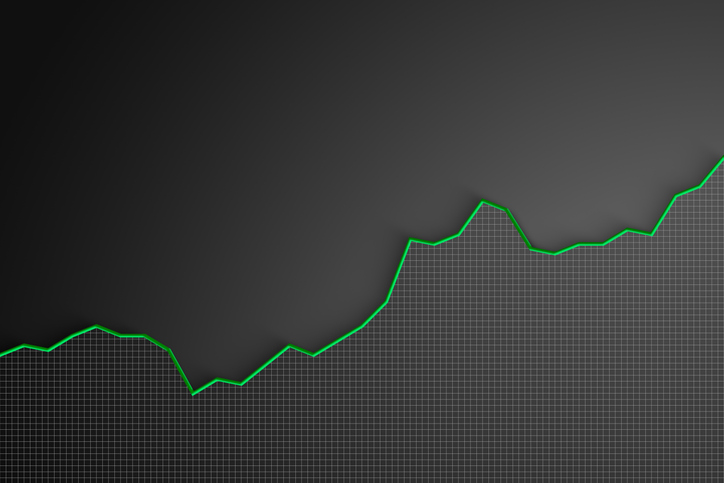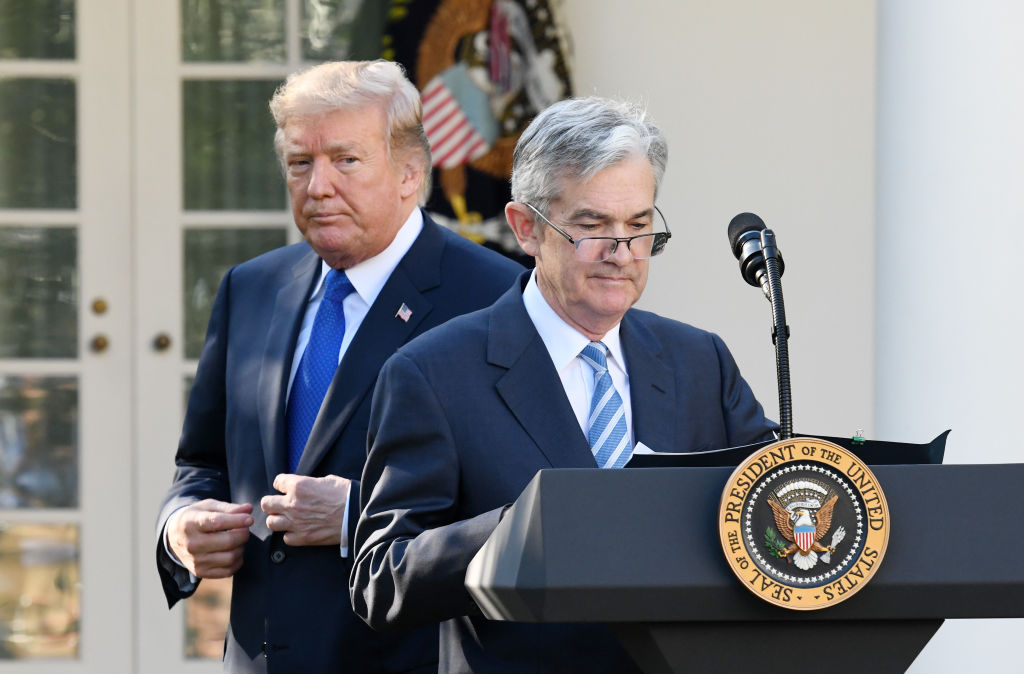Nvidia Stock Is Joining the Dow. Is It Time to Buy?
Nvidia will replace Intel in the Dow Jones Industrial Average this Friday. What does it mean for the stock?


Whether your preferred cliche is "talk about buying high" or "better late than never," Nvidia (NVDA) will at long last replace Intel (INTC) in the Dow Jones Industrial Average.
Oh, and by the way, Dow (DOW) is getting the boot too. It will be swapped out of the venerable blue-chip average for Sherwin-Williams (SHW). The NVDA and SHW changes will take place before the market opens on November 8.
As much interest as such events generate, being tapped for the Dow is more symbolic than material. After all, the S&P 500 is the main benchmark for U.S. equity performance. That's why many trillions of dollars are invested in products that track the index.

Sign up for Kiplinger’s Free E-Newsletters
Profit and prosper with the best of expert advice on investing, taxes, retirement, personal finance and more - straight to your e-mail.
Profit and prosper with the best of expert advice - straight to your e-mail.
For example, the largest exchange-traded fund (ETF) in the world, the SPDR S&P 500 ETF Trust (SPY), has more than $590 billion in assets under management alone. A comparable product for the DJIA, the SPDR Dow Jones Industrial Average ETF Trust (DIA), holds less than $39 billion in assets under management.
Also know that, unlike the S&P 500 or the Nasdaq Composite, the Dow is weighted by price rather than by market cap. Although Nvidia has an outsized influence on the movements of the cap-weighted benchmarks, at current prices NVDA stock will be as important to the DJIA as, roughly, 3M (MMM).
There's also the fact that it would have been nice if the keepers of the Dow had made this move sooner rather than later. Once Nvidia split its stock last spring, it became a good fit for the Dow.
Intel, on the other hand, has been dead weight on the Dow for decades.
Indeed, NVDA lapped INTC a long time ago as a credible representative of the semiconductor sector in a concentrated portfolio. (Recall that the Dow comprises just 30 stocks.)
True, NVDA's share price pre-split made it essentially ineligible for Dow membership, but it's impossible not to look back at the charts and wonder what could have been. The bottom line is that the Dow would be higher today had NVDA been a component rather than INTC.
Nvidia for the long run
As we have noted, anyone who put $1,000 into Intel stock 20 years ago has endured a destruction of their capital. Nvidia, on the other hand, has been among the greatest wealth creators of the past several decades. Have a look at what $1,000 invested in Nvidia stock 20 years ago would be worth today. If you wish you had a time machine, you are not alone.
Suffice to say the DJIA's performance would have been better with Nvidia in it. But that wasn't possible. So, is this better late than never?
That's harder to say. Ordinarily, one wants to buy low. Nvidia is up 178% so far this year on a price basis. Heck, shares have gained nearly 30% over the past three months. There's another Wall Street cliche about the easy money already having been made. And it is always true that past performance is not a guarantee of future results.
Either way, the DJIA is certainly more representative of whatever it's supposed to represent with NVDA in it rather than INTC. But apart from having the imprimatur of the editors of the Dow, nothing fundamental has changed.
This fact by itself should be of enormous comfort to Nvidia bulls, of which there are legions on the Street. Of the 62 analysts issuing opinions on NVDA stock surveyed by S&P Global Market Intelligence, 48 rate it at Strong Buy, 10 say Buy and four call it a Hold. That works out to a rare consensus recommendation of Strong Buy. Indeed, Nvidia routinely makes the list of analysts' top S&P 500 stocks to buy.
As to whether you should add to your exposure to Nvidia stock based on its inclusion in the Dow, the answer is no. If you own diversified funds or ETFs tracking, for example, the S&P 500, Nasdaq Composite or Nasdaq-100, you already own Nvidia – and it's probably enough.
As exciting and enviable as Nvidia's position in artificial intelligence (AI) may be, it is ultimately a chip maker. The chip industry is cyclical, and no stock has ever gone up in a straight line.
Related Content
- If You'd Put $1,000 Into Amazon Stock 20 Years Ago, Here's What You'd Have Today
- If You'd Put $1,000 Into Apple Stock 20 Years Ago, Here's What You'd Have Today
- If You'd Put $1,000 Into Microsoft Stock 20 Years Ago, Here's What You'd Have Today
Get Kiplinger Today newsletter — free
Profit and prosper with the best of Kiplinger's advice on investing, taxes, retirement, personal finance and much more. Delivered daily. Enter your email in the box and click Sign Me Up.

Dan Burrows is Kiplinger's senior investing writer, having joined the publication full time in 2016.
A long-time financial journalist, Dan is a veteran of MarketWatch, CBS MoneyWatch, SmartMoney, InvestorPlace, DailyFinance and other tier 1 national publications. He has written for The Wall Street Journal, Bloomberg and Consumer Reports and his stories have appeared in the New York Daily News, the San Jose Mercury News and Investor's Business Daily, among many other outlets. As a senior writer at AOL's DailyFinance, Dan reported market news from the floor of the New York Stock Exchange.
Once upon a time – before his days as a financial reporter and assistant financial editor at legendary fashion trade paper Women's Wear Daily – Dan worked for Spy magazine, scribbled away at Time Inc. and contributed to Maxim magazine back when lad mags were a thing. He's also written for Esquire magazine's Dubious Achievements Awards.
In his current role at Kiplinger, Dan writes about markets and macroeconomics.
Dan holds a bachelor's degree from Oberlin College and a master's degree from Columbia University.
Disclosure: Dan does not trade individual stocks or securities. He is eternally long the U.S equity market, primarily through tax-advantaged accounts.
-
 Stock Market Today: Stocks Soar on China Trade Talk Hopes
Stock Market Today: Stocks Soar on China Trade Talk HopesTreasury Secretary Bessent said current U.S.-China trade relations are unsustainable and signaled hopes for negotiations.
By Karee Venema
-
 2026 Disney Dining Plan Returns: Free Dining for Kids & Resort Benefits
2026 Disney Dining Plan Returns: Free Dining for Kids & Resort BenefitsPlan your 2026 Walt Disney World vacation now. Learn about the returning Disney Dining Plan, how kids aged three to nine eat free, and the exclusive benefits of staying at a Disney Resort hotel.
By Carla Ayers
-
 Stock Market Today: Stocks Soar on China Trade Talk Hopes
Stock Market Today: Stocks Soar on China Trade Talk HopesTreasury Secretary Bessent said current U.S.-China trade relations are unsustainable and signaled hopes for negotiations.
By Karee Venema
-
 How Can Investors Profit From AI's Energy Use?
How Can Investors Profit From AI's Energy Use?Global energy demand is expected to grow by leaps and bounds over the next several years as AI usage accelerates. Here's how to get a piece of the pie.
By Jacob Schroeder
-
 Can Trump Fire Powell? A Supreme Court Case Could Decide
Can Trump Fire Powell? A Supreme Court Case Could DecidePresidential posts threaten to overwhelm decades of precedent and tradition, whatever the nine justices decide.
By David Dittman
-
 What Are AI Agents and What Can They Do for You?
What Are AI Agents and What Can They Do for You?AI agents promise to be the next big thing in artificial intelligence, but what exactly do they do?
By Tom Taulli
-
 Should You Buy an iPhone Now Before Tariffs Hit?
Should You Buy an iPhone Now Before Tariffs Hit?Looming tariffs can make an iPhone purchase seem urgent. Here's what to do if you need another phone but want to save money.
By Laura Gariepy
-
 SRI Redefined: Going Beyond Socially Responsible Investing
SRI Redefined: Going Beyond Socially Responsible InvestingNow that climate change has progressed to a changed climate, sustainable investing needs to evolve to address new demands of resilience and innovation.
By Peter Krull, CSRIC®
-
 Here's When a Lack of Credit Card Debt Can Cause You Problems
Here's When a Lack of Credit Card Debt Can Cause You ProblemsUsually, getting a new credit card can be difficult if you have too much card debt, but this bank customer ran into an issue because he had no debt at all.
By H. Dennis Beaver, Esq.
-
 33 Stocks That Could Rally 50% or More This Year
33 Stocks That Could Rally 50% or More This YearAnalysts say these S&P 500 stocks have at least 50% price upside over the next year or so.
By Dan Burrows